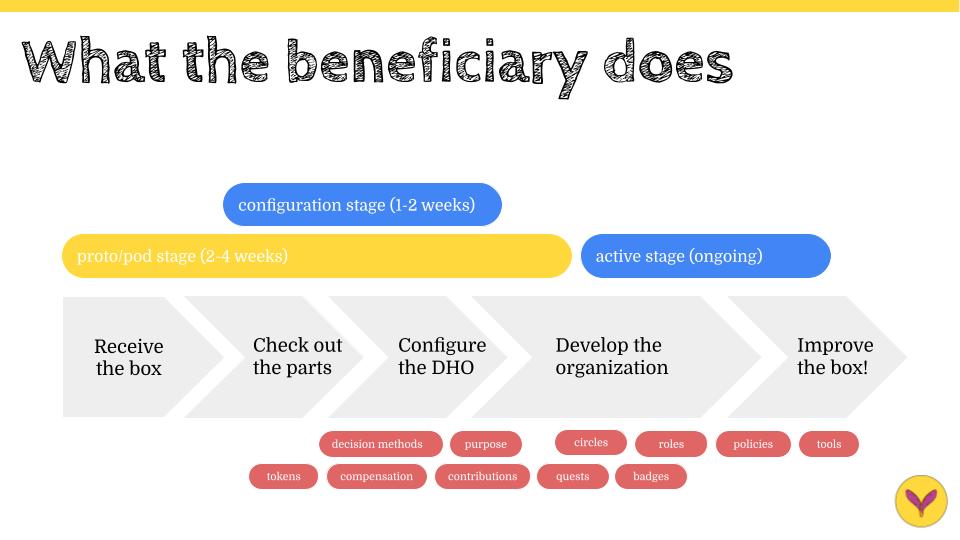Thinking about boxes
Purpose
"Imagine you receive a box that contains everything you need to set up your organization. Imagine you open this box and inside you see a "Quick Guide" that gives you and your team a quick way to launch your own organization without the inertia and pain of following the old paradigm of slowly setting up an HR function to hire and to pay the "right" people, getting managers to control those people, and building an org chart to put these people into tiny squares. Opening the Organization-in-a-Box follows an entirely different kind of paradigm - one in which you can bring your genesis team together, agree on the initial allocation of tokens, download and configure your organization's DNA and then launch it within a much shorter timeframe and with much less startup cost." - The Chronicles of Samara
Concept (Why using boxes)
The concept of the "Organization-in-a-Box" (and later the "Marketplace-in-a-Box and Village-in-a-Box) came from several places:
- the tangible aspect of a "box", something you can (almost) hold in your hands
- the ability to open a large possiblity space that naturally collapses into an org
- the ease-of-delivery aspect of shipping and handing out boxes to clients
- the ease-of-co-creation aspect of compiling the contents of the box together
- the social design process of improving the Open Source contents (Cheryl Heller)
- the blurred line between the digital and the physical (e.g with a deck of cards)
- the Adobe Kickbox concept for innovation teams (see attachments on this page)
Boxes-as-a-Service (How we execute)
- Agreement on funding for box v0.1
- Launch of new Hypha Quest
- Other funding mechanisms
- Agreement on the box concept and execution team (roots)
- Min viable artifacts in physical and digital realm (contents)
- Min viable brand and delivery mechanism to launch concept (packaging)
- Scouting for the first recipients of the box (branches)
- Min viable support and feedback loops (via Ambassadors or Samarans)
- Min viable customer journey maps
- Min impact models (what are the success
metricsmetrics) - Min pricing model (free Starter Kit with services/expansions)
and



